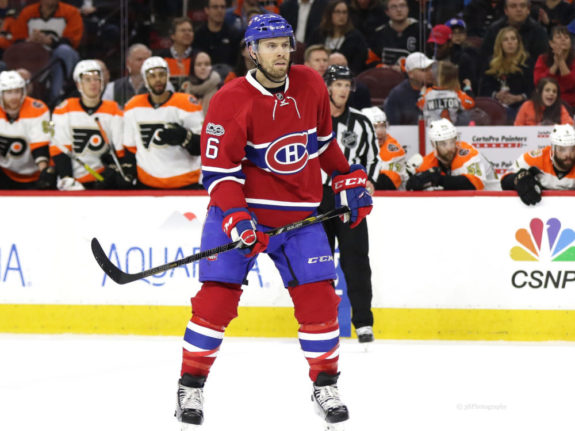As the calendar rolls over from 2018 to 2019, the halfway point of the season has arrived in the NHL, and the Montreal Canadiens see themselves locking down the final wild card position in the Eastern Conference. While there are a lot of things that Montreal did right in the first half of the season, the most alarming matter is their ineffectiveness on special teams, primarily their power play. In the modern-day NHL, power plays have become so crucial for teams that the ones who are the most successful usually go deeper in the playoffs.

The Canadiens have the league’s third-worst power play, which is scoring at a measly 13.4 percent clip. To make matters worse, their penalty kill is also near the bottom third of the league. Statistically the Canadiens are great at five-on-five, but that is not sustainable, and solely on itself, will not help them get into the postseason.
Related: Canadiens’ Playoff Hopes Hinge Price Injury
Lack of Success Means Lack of Creativity
A lot of the shortcomings on the power play stems from the inability to effectively gain the offensive zone. It has become far too common to see just one forward chasing after the puck in the offensive zone when they play dump-and-chase on the power play. This strategy seems complacent and has continuously shown to be ineffective.
The key part in that strategy is having forwards with speed and grit in order to get to the dirty areas. What’s strange in Montreal’s situation is that, with their immense speed up front, there is no reason why they should not be able to put more pressure on teams in their own zone.
Over the last decade, the Canadiens’ power play attack has been one-dimensional. Without a trigger man like Alex Ovechkin, Patrick Laine or Steven Stamkos on the man advantage, the majority of the Canadiens shots are generated from the point. It started over a decade ago with Sheldon Souray and then Mark Streit. Those seasons the Canadiens sat atop of the NHL on the power play, but the league has changed and it looks like Montreal has decided not to keep up.
Teams around the league emphasize blocking shots, and thus the shot from the point became a thing of the past. Then it was Andrei Markov and P.K. Subban, and now it is Shea Weber and Jeff Petry. The Canadiens have become the pinnacle of complacency on the power play, and because of that, teams are having ample success killing penalties against them.

When you look at the top-three power play teams in the league, the Tampa Bay Lightning, Winnipeg Jets and Florida Panthers, there is one thing that stands out as a common thread. All three utilize their playmakers in better scoring positions than the Canadiens do. They work a power play that is not solely centered on a booming shot from the point, and because of that, more players are able to step up and contribute. The Canadiens’ power play needs to focus on getting shots to the net to get their pesky forwards in a position to knock in a rebound and not rely on just the powerful shot of Weber.
What a Good Power Play Could Mean
If the Canadiens capitalized on one-third of their power plays, they would move from the basement of the NHL special teams to near the top. That is nearly 15 goals scattered over the first 41 games, which is huge. A good power play creates a ton of energy and momentum for a team whilst a struggling power play does the opposite. You have to wonder how different the complexion of this team’s season might be if the power play found more ways to capitalize on its chances.
When the @CanadiensMTL need a clutch goal, they call Tomas… https://t.co/NEKl6MN7TB
— NHL (@NHL) December 29, 2018
Now there is no reason to look at the past, but the coaching staff in Montreal needs to do a better job of getting players in places they can succeed. They need to put Max Domi and Jonathan Drouin in better spots on the power plays, perhaps the half-wall where they can create more freely. The Canadiens are at their best when they have their small, pesky forwards crashing the net and banging away at rebounds. They have shown in small doses that they can be productive on special teams when they utilize all of their skilled forwards.
Andrew Shaw est le cinquième joueur des Canadiens à avoir atteint le plateau des dix buts cette saison! 👏@shawz15er is the fifth Hab to join the 10-goal club this season! #GoHabsGo https://t.co/tuDKr3bj6Y
— Canadiens Montréal (@CanadiensMTL) December 30, 2018
As the Canadiens continue to fight towards holding down a playoff spot, the spotlight will be focused on their special teams the rest of the season. If they can improve their power play by five to 10 percent, then this team could be in for a lot of hockey come April. Overall, they will need a combined effort from the coaches and the players to not just make some small changes to their power play woes, but making it the team’s primary focus.
When the Canadiens are on the power play, more times than not, they lack cohesion and it becomes a wasted opportunity. Montreal cannot afford that to be the case anymore and have to address this issue and find ways to make their special teams great again.